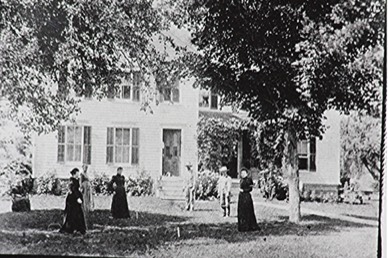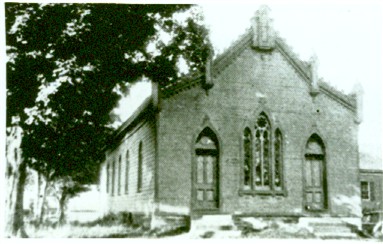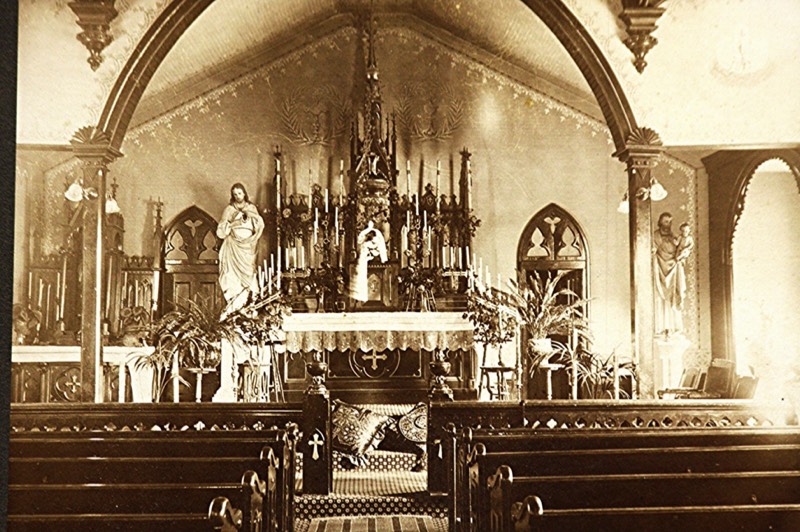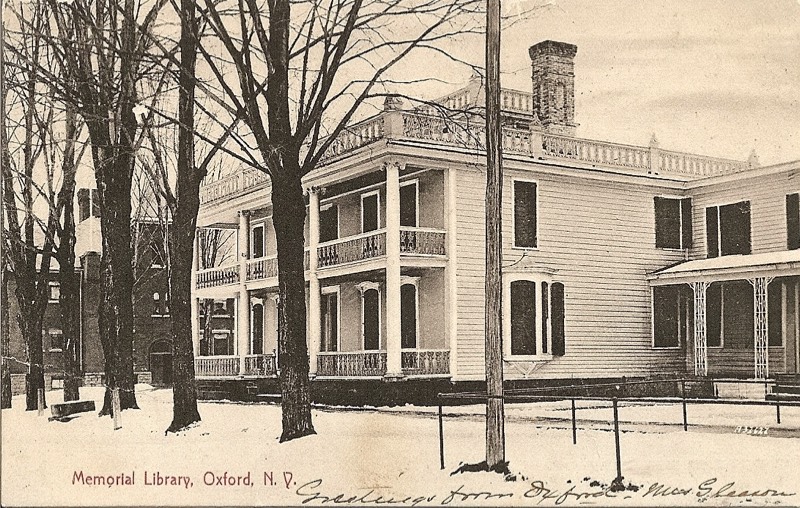Our Story…
As early as 1826 priests from the new Diocese of Albany came by horseback and wagon to the rolling, wooded hills along the Chenango River to celebrate Mass and meet the needs of the Catholic families living there. They traveled 60 miles from Utica to celebrate Mass in the Smithville area including the Flanagan farm. Later Mass was celebrated in a log cabin 6 miles west of Oxford owned by James B. Moore. Although we don’t know which Utica Church they came from, records indicate these well-traveled priests were Fathers McCluskey, Quarter and Buckham.
About the year, 1834, priests from St. John’s in Binghamton (now St. Patrick’s) began making the somewhat shorter ride to help out in our area. Although still a long trip by horseback and wagon it was easier for them to travel 35 miles so they took over Sacramental duties for our area. The first recorded baptism was in 1834 by Fr. J. V. O’Reilly who traveled 50 miles up from St. Joseph Church in Pa.
Although we began with only 6 or 7 families, by 1848 there were enough Catholics attending Mass to form a parish. This new Parish, which encompassed Smithville, Greene and the surrounding area, took St. Joseph, husband of the Blessed Virgin Mary, as their patron. Thus began St. Joseph Parish, Oxford. Fr. James Hourigan from St. John’s, Binghamton, celebrated the first Parish Mass at the home of James Flanagan on Greene Street.




A year later, enthusiastic parishioners purchased land from Ethan and James Clark for $1 and built a Church. Under the direction of Fr. Hourigan, the new Church was ready to celebrate its first Mass in 1851. People traveled for miles to attend Mass in the first Catholic Church built (and still functioning) in Chenango County.
There are few authentic records on the beginnings of our Parish except for the names of the clergy attending.
Rev. Callan stayed in Oxford residing at the Burr house 1852-56 which is now Oxford Memorial Library. Library records show that there was also a chapel located in the building. Fr. Callan was instrumental in purchasing land from C. Locke to start St. Joseph cemetery which is still in use today.
From 1869 to 1875 Fr. Daniel O’Connell was Parish priest but his residence is unknown. In 1870 the small Church building was moved backward (probably the current Sacristy and Sanctuary part) and a vaulted room with stained glass windows was added along with pews. He also added twin front doors with a beautiful large stained glass window between them.
Fr. O’Connell left in 1875 and was replaced by Rev. James P. Harrigan. That year the cemetery was enlarged with the donation of farm land from Leonard Quinn, Sr. In later years another land donation was received from the same family giving the cemetery 3.5 acres of land still to be developed.
In 1886 the Syracuse Diocese was formed out of the Albany Diocese and Oxford, Binghamton and the surrounding towns became part of the new Diocese with Most Reverend Patrick A, Ludden as its first bishop. He appointed Rev. George C. Mahon to St. Joseph Church (1889-1903).
What an improvement in 1889 when electricity was installed! The twin doors were removed and replaced with one large door and Mr. Isaac Sherwood of Oxford designed and constructed an altar to the Blessed Virgin Mary.
In 1897 the Women’s Relief Corp Home was built to provide a home for wives and mothers of American Veterans who had no other place to go. While men were admitted to the Soldiers and Sailors Home in Bath, no provision was made for their wives and mothers. Our priests began serving them as an outreach of St. Joseph Parish. At first the women traveled to Church for Mass but as the facility started serving disabled veterans as well, the priests traveled there to celebrate Mass. The facility is now known as the NY State Veterans Home of Oxford and Mass is held there once a week.
During the pastorate of Rev. D. Francis Curtin (1922-25) the outside of the Church was stuccoed and the basement excavated. Fr. William Brennan (1925-29) followed him and the basement was completed and fitted for use.
In 1935 Rev. Edward X. Kiely (1934-36) had the wood stoves removed and a new furnace warmed parishioners.
During Fr. Richard McNerney’s time with us (1980-85) the present 40 x 40 addition was constructed and readied for use as a Parish Center. Fr. McNerney also restored the church to its original look by installing white vinyl siding which resembled the original clapboards. He also insulated the building and installed new wiring.
Fr. Valentine Krul (1988-94) was our last resident Pastor. Fr. Krul installed the ramp, moved the St. Joseph Shrine to its present location and constructed the Memorial to Veterans and Cemetery chapel.
While Fr. Joseph Zaresky and Fr. Douglas Cunningham were with us, our rectory was converted to comfortable parish offices, meeting rooms and classrooms for religious education classes. Now that Fr. Gerald Lupa is staying here, a priest suite has been sectioned off.
Since 1994 we have had many wonderful and caring priests and enjoyed sisterhood with 3 area churches. As we look back over the 165 years of our existence, there have been many changes. Priests have made many improvements while maintaining the basic beauty of our church. But while many priests have come and gone, our Parish family has lived on, thrived and worshipped together. In good times and in difficult times we praise our God, care for each other, sing and laugh a lot and enjoy all our blessings.
Now here we are: handicapped accessible and air conditioned: a far cry from our beginnings except for the enthusiasm and faith of our close knit Parish Family which has remained unchanged in 165 years.
Acknowledgements:
Our thanks to the Historical Committee of 1989 for compiling information and the booklet they wrote, MaryLou Lougheed for hours spent poring over newspapers archived in our Library, Claire Braun for collecting and compiling information and Cathy Rood for continuing the process.
